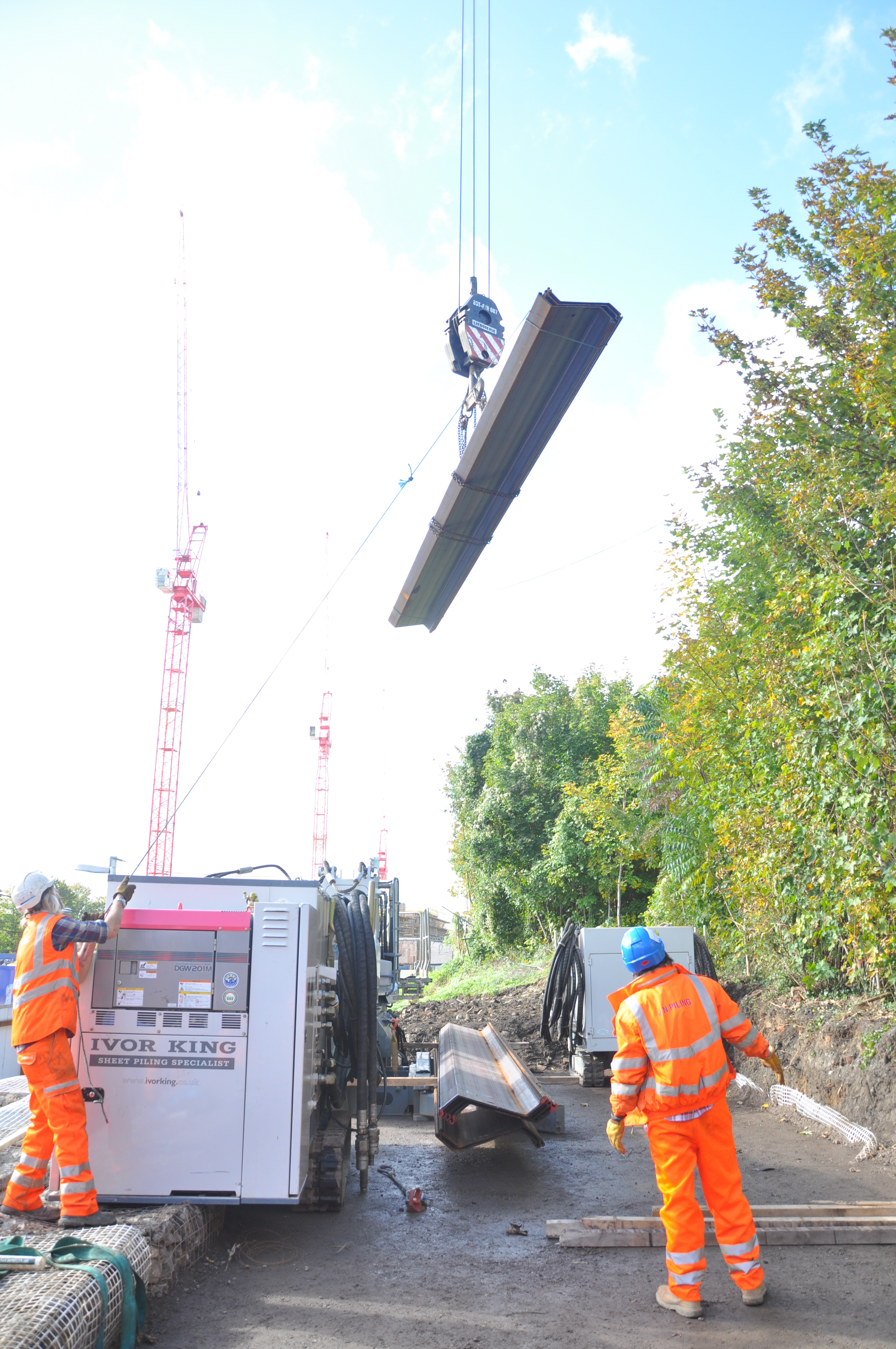TYPES OF PILING PLATFORM
- Pure Crush/Granular
- Geogrid Reinforced and Chemical
- Chemically Stabilised
PILING PLATFORM DESIGN CRITERIA
Effective piling platform designs must:
- Enable plant to remain stable when operating/tracking
- Not deform excessively under load
- Be robust to enable prolonged use where required
- Allow plant to operate properly (i.e. tracked plant to sprag)
Additional requirements can include the need to:
- Provide a minimum CBR for foundations/ground bearing slabs for the new build
- Be a base for other loadings such as scaffold foundations
- Provide a contamination capping solution on remedial sites.
PILING PLATFORM DESIGN CONSIDERATIONS
Our engineers take into account the need to mitigate different ground conditions, topographies and site layout requirements.
This may include requirements for checks on slope stability, pressure on services and buried assets, and lateral earth pressures on retaining assets such as sheet pile walls.
Design solutions can incorporate conventional mass fill in accordance with BRE 470, or our own hybrid approach using geo-grid reinforcement. We also have experience designing lime or OPC cement stabilised platforms to create effective piling platforms.
In addition, we have experience designing platforms formed of stabilised (lime or cement) materials. This can include composite schemes consisting of geogrid reinforced stabilised mats where circumstances required.
The key benefit with stabilised designs is that requirements for imported materials are limited or even eliminated, which can reduce the cost and carbon footprint of the scheme.
GEO-GRID REINFORCEMENT ANALYSIS
We have developed in-house analysis techniques for geo-grid reinforcement.
This analysis allows the design of geogrid reinforced crane and piling platforms that are thinner, have a higher bearing capacity and are more cost effective than simple designs undertaken in accordance with BRE470 guidelines.





